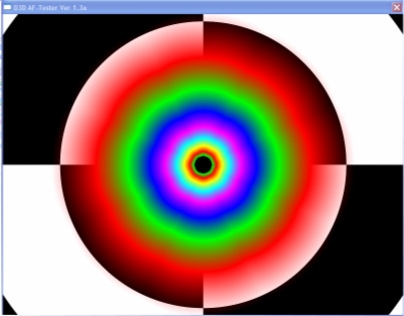I have some questions to ask about the problem of angle dependent AF as explained in the article.
There is a reason that explains why some angles get more AF samples than others. The algorithm used by ATI, and now by NVidia, is quite simple and works taking multiple texels/samples along a single axis. Those axis are at 0º, 45º, 90º and 135º as the tunnel test shows. The algorithm is simple and easily implementable in hardware because it just needs to calculate the ratio (related to the texture sample shape when projected onto the texture and calculated using the texture access derivatives on texture space u,v over screen space x,y) for each pair of perpendicular axis and then calculate the texel/sample offsets/addresses along the chosen axis.
I don't know what the algorithm for NV2x, even though I tried to discover it, (that may only means that I'm not that good discovering such algorithms though) but at some point I was starting to suspect that given the squarish looking form (it's more easy to see the squarish form when lowering the quality parameter or selecting bilinear) in the tunnel test that they were just forcing maxAF/2 or something similar for any texture access that wasn't getting maxAF with the algorithm described above (using only the 0º and 90º axis, as ATI was doing at the time with the R2xx), or perhaps other function that was increasing 'artificially' the number of samples to take. I never tested if that was correct.
In any case unless the GF3 is taking the AF samples on a grid and with a calculated non a rectangular shape (that is, a process way more complex that taking samples along a selected axis), which I doubt, the extra AF samples shouldn't be helping that much to improve the image quality as they are just more samples, but not following the irregular/anisotropic shape or the texture sample. The tunnel is just showing how many samples (which mipmap as the mipmap selected is dependant in the number of AF samples) is the AF algorithm taking, not if it looks better or it's more mathematically correct.

